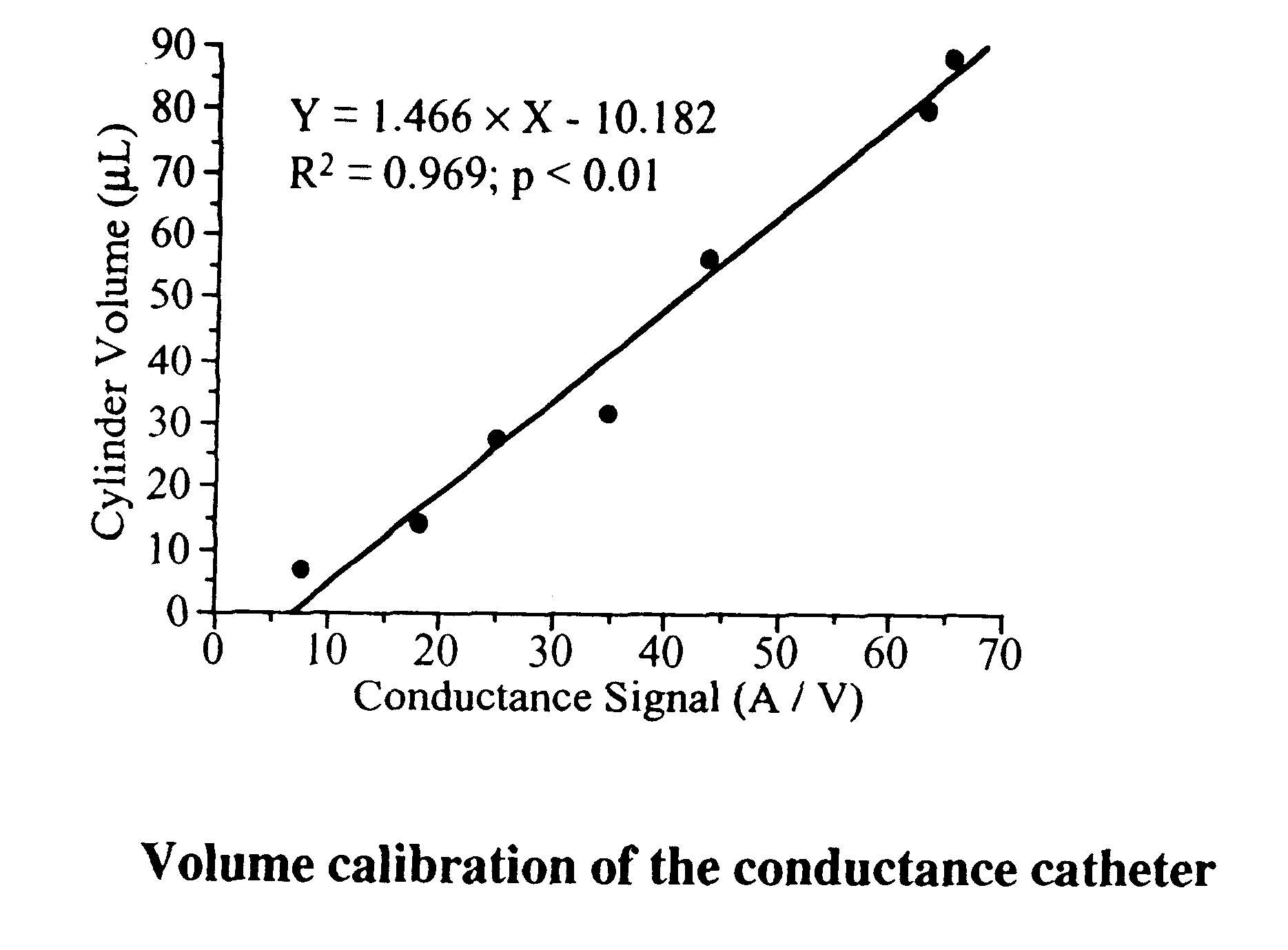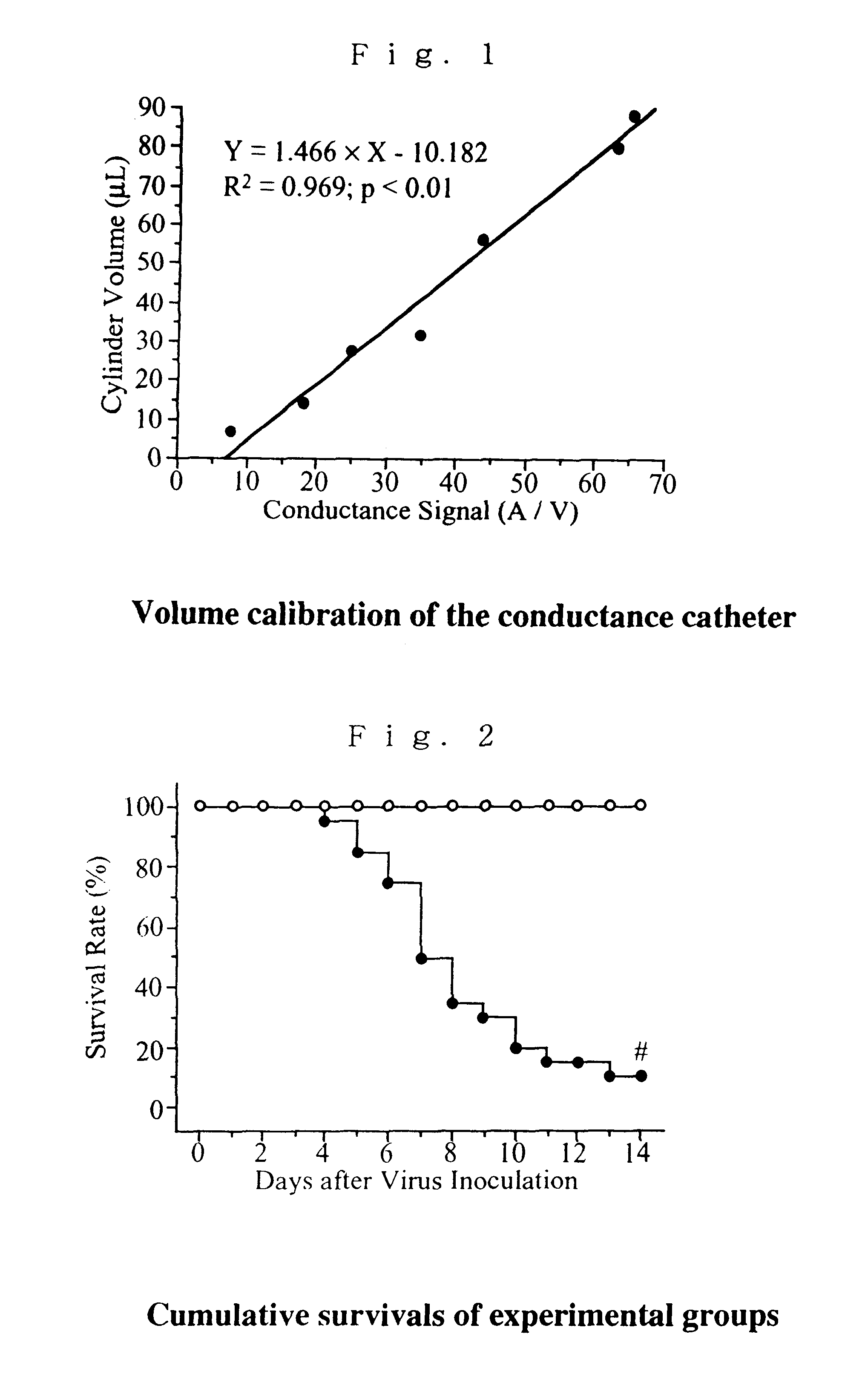Methods for measurement of hemodynamics
a hemodynamic and measurement method technology, applied in the field of hemodynamic measurement methods, can solve the problems of difficult to use the prior art methods, unable to measure hemodynamics under physiological conditions, and essentially vulnerable to invasion,
- Summary
- Abstract
- Description
- Claims
- Application Information
AI Technical Summary
Benefits of technology
Problems solved by technology
Method used
Image
Examples
Embodiment Construction
Viral myocarditis is an important cause of congestive heart failure and may lead to dilated cardiomyopathy. However, the hemodynamic changes associated with its acute phase have not been analyzed in detail. This study, performed in a murine model of encephalomyocarditis virus myocarditis, used a new Millar 1.4-Fr conductance-micromanometer system for the in vivo determination of the left ventricular (LV) pressure-volume relationship (PVR).
Methods
(1) Conductance Catheter System Design
We used the Millar 1.4 Fr catheter (SPR-719, Millar Instruments, Houston, Tex., USA) composed of 4 conductance electrodes and a micromanometer. The distance between the conductance sensor electrodes is 4.5 mm. The conductance system and the pressure transducer controller [Integral 3 (VPR-1002), Unique Medical Co., Tokyo, Japan] were set at a frequency of 20 kHz, the full-scale current selected at 20 .mu.A, and the pressure transducer at 5 .mu.V / V / 100 mmHg. The pressure-volume loops and intracardiac elect...
PUM
 Login to View More
Login to View More Abstract
Description
Claims
Application Information
 Login to View More
Login to View More - R&D
- Intellectual Property
- Life Sciences
- Materials
- Tech Scout
- Unparalleled Data Quality
- Higher Quality Content
- 60% Fewer Hallucinations
Browse by: Latest US Patents, China's latest patents, Technical Efficacy Thesaurus, Application Domain, Technology Topic, Popular Technical Reports.
© 2025 PatSnap. All rights reserved.Legal|Privacy policy|Modern Slavery Act Transparency Statement|Sitemap|About US| Contact US: help@patsnap.com



